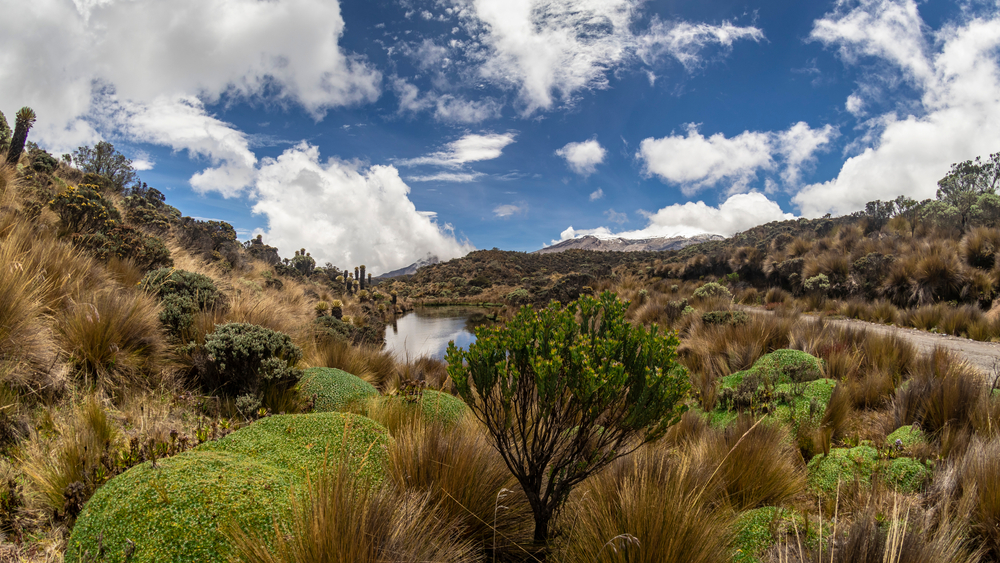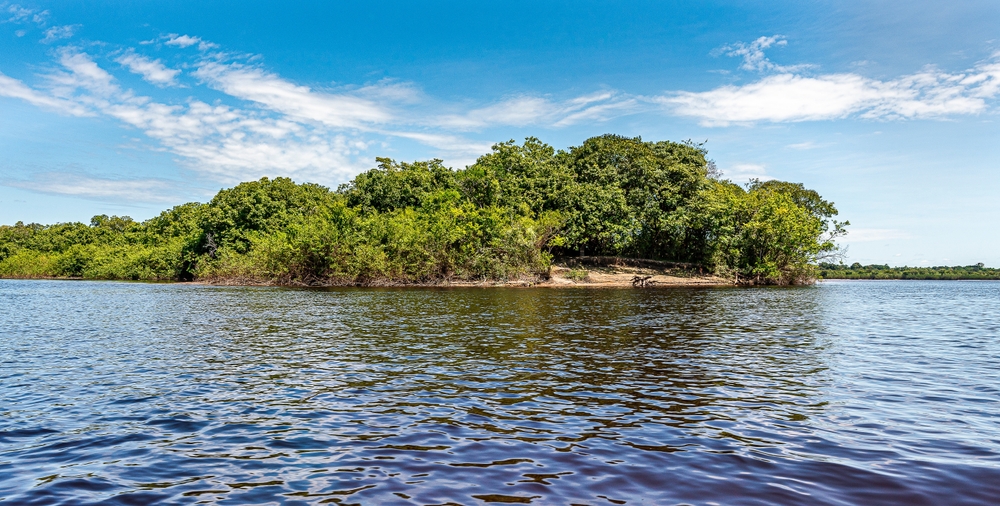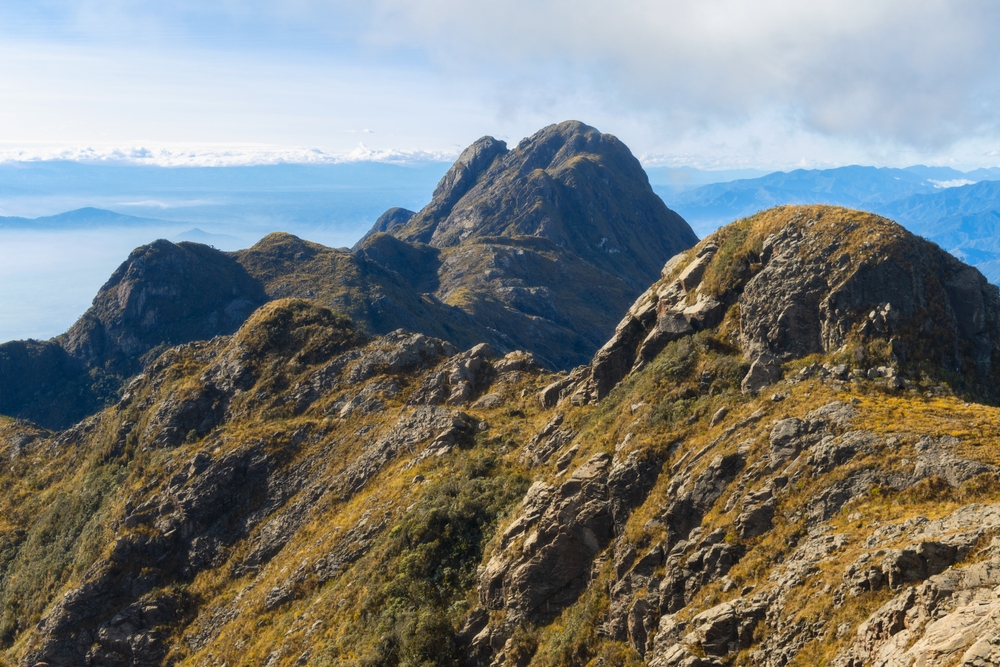Los Nevados Overview
Los Nevados National Natural Park, or Parque Nacional Natural Los Nevados in Spanish, is a stunning protected area located in the central Andes of Colombia.
Spanning approximately 583 square miles (1,503 square kilometers), this park stretches across the departments of Caldas, Risaralda, Quindío, and Tolima. Dominated by towering volcanoes, the park’s most iconic feature is the Nevado del Ruiz, which reaches an elevation of 17,457 feet (5,321 meters).
Other notable peaks include Nevado del Tolima, Nevado de Santa Isabel, and Paramillo del Quindío. These snow-capped mountains contrast sharply with the lush cloud forests, páramo ecosystems, and glacial lakes that define the park’s diverse landscapes.
The terrain of Los Nevados is characterized by dramatic elevation changes, from the lowland forests at around 8,200 feet (2,500 meters) to the windswept páramo and towering glacial peaks. The páramo, a unique high-altitude tropical ecosystem, is home to giant frailejones (Espeletia), which thrive in the cold, misty environment.
These strange, fuzzy plants help retain moisture and regulate the region’s hydrological cycles. Expansive grasslands and high-altitude lagoons, such as Laguna del Otún and Laguna Verde, dot the park, creating serene reflections of the surrounding mountains. The lower altitudes host dense Andean forests filled with moss-covered trees and vibrant orchids.
Los Nevados is home to a remarkable variety of wildlife, including some of Colombia’s most elusive species. The Andean condor, one of the world’s largest flying birds, soars over the peaks, while the endangered mountain tapir quietly roams the páramo.
Other notable mammals include the spectacled bear, a symbol of conservation in South America, and the white-tailed deer. The park also shelters a variety of primates and small carnivores. Birdwatchers can spot an impressive array of avian species, from the colorful bearded helmetcrest hummingbird to the endemic buffy helmetcrest. The park’s lakes and wetlands attract migratory waterfowl, adding to the rich biodiversity.
Popular attractions within the park include treks to the summits of its volcanoes, with guided expeditions leading climbers to the snow-covered peaks of Nevado del Ruiz and Nevado del Tolima. Hikers can traverse the scenic Valle de Cocora, a gateway to the park known for its towering wax palms.
The hot springs of Termales del Ruiz offer a relaxing experience amidst the high-altitude wilderness. Laguna del Otún, a glacial lake situated at over 12,000 feet (3,700 meters), is a favorite for camping and photography. Adventure seekers often engage in mountaineering, rock climbing, and even skiing when conditions allow.
Visitors to Los Nevados can experience the park through various outdoor activities, including hiking, birdwatching, and ecological tours that educate travelers about the páramo ecosystem. Horseback riding is another popular way to explore the terrain, especially for those venturing through the Cocora Valley.
Many trails wind through the park, offering breathtaking views of glaciers, waterfalls, and volcanic craters. Local guides provide valuable insights into the region’s fragile environment, indigenous heritage, and conservation efforts.
Los Nevados faces conservation challenges, primarily due to glacial retreat caused by climate change. The park’s once-massive glaciers have significantly shrunk in recent decades, threatening the water supply for surrounding communities. Deforestation and tourism pressure also pose risks to the delicate páramo ecosystem.
However, conservation efforts, including reforestation initiatives and stricter visitor regulations, have helped mitigate some of these impacts. Colombia’s national park system actively monitors the park’s biodiversity and collaborates with local communities to promote sustainable tourism.
Despite these challenges, Los Nevados remains a vital stronghold for Andean wildlife and a breathtaking destination for nature lovers.















































































